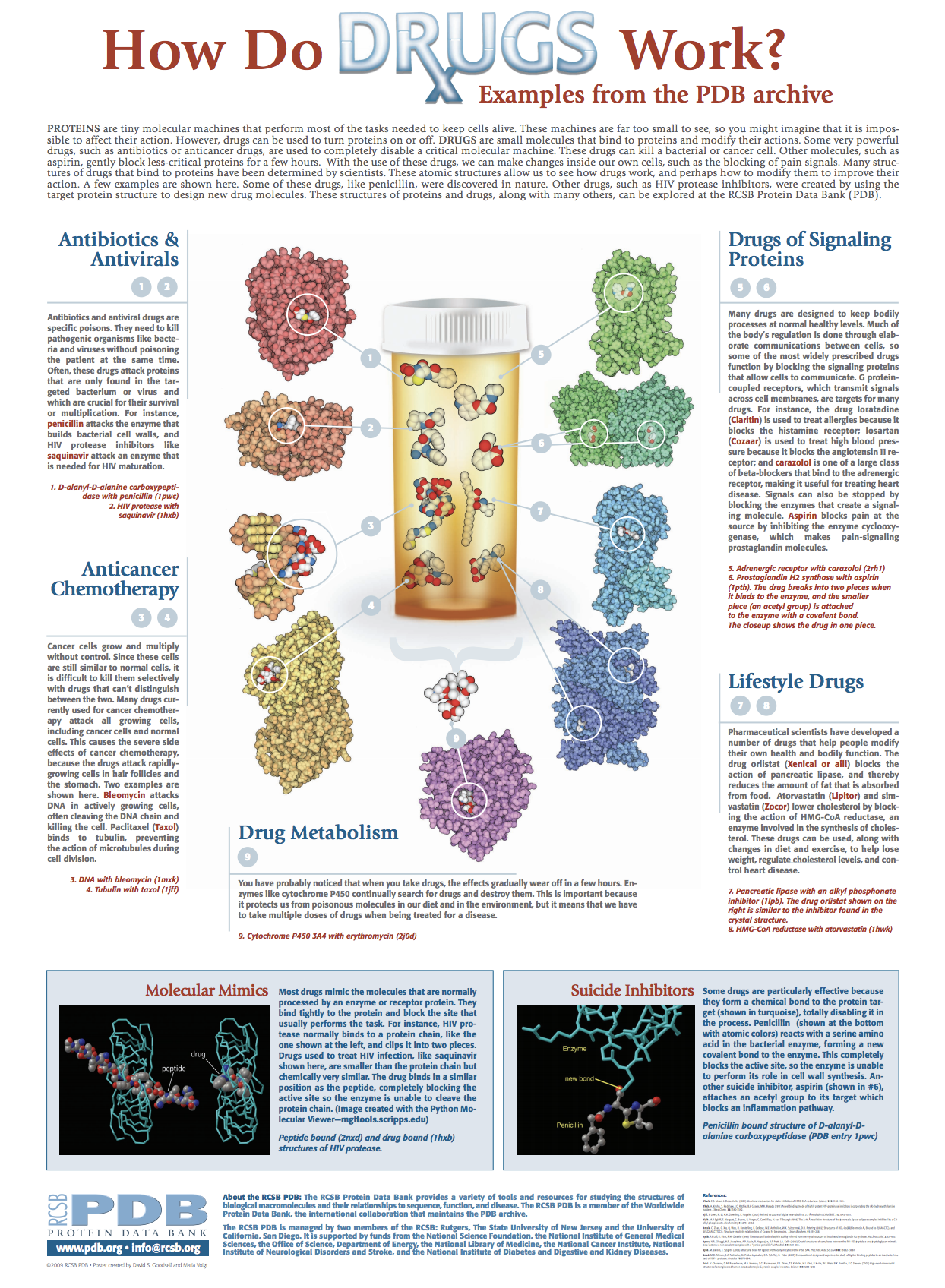News
PDB-101 Focus: Peak Performance
06/11 
Since 2014, PDB-101 has focused on different topics to help build a collection molecular stories around a particular theme. Past topics have included cancer and diabetes.
In 2024, PDB-101 will highlight the structural stories of Peak Performance: the structural biology of athletics and well-being.
Athletes require bodies that are the best that is possible, all the way from molecules to muscles. By understanding the structure and function of our molecules, athletes can ensure that they are performing at their peak. This knowledge also informs the ways that we all can live our best lives, at all stages of our lives.
Visit the PDB-101 Peak Performance Browser for resources such as:
 Drugs are small molecules that bind to one specific protein and modify its action. Some very powerful drugs, such as antibiotics or anticancer drugs, are used to completely disable a critical molecular machine. These drugs can kill a bacterial or cancer cell. Other molecules, such as aspirin, gently block less-critical proteins for a few hours. With the use of these drugs, we can make changes inside our own cells, such as the blocking of pain signals. Many structures of drugs that bind to proteins have been determined by scientists. These atomic structures allow us to see how drugs work, and perhaps how to modify them to improve their action. A few examples are shown here. Some of these drugs, like penicillin, were discovered in nature. Other drugs, such as HIV protease inhibitors, were created by using the target protein structure to design new drug molecules. These structures of proteins and drugs, along with many others, can be explored at RCSB PDB.
Drugs are small molecules that bind to one specific protein and modify its action. Some very powerful drugs, such as antibiotics or anticancer drugs, are used to completely disable a critical molecular machine. These drugs can kill a bacterial or cancer cell. Other molecules, such as aspirin, gently block less-critical proteins for a few hours. With the use of these drugs, we can make changes inside our own cells, such as the blocking of pain signals. Many structures of drugs that bind to proteins have been determined by scientists. These atomic structures allow us to see how drugs work, and perhaps how to modify them to improve their action. A few examples are shown here. Some of these drugs, like penicillin, were discovered in nature. Other drugs, such as HIV protease inhibitors, were created by using the target protein structure to design new drug molecules. These structures of proteins and drugs, along with many others, can be explored at RCSB PDB.
How Do Drugs Work? is available as a downloadable flyer and poster.












